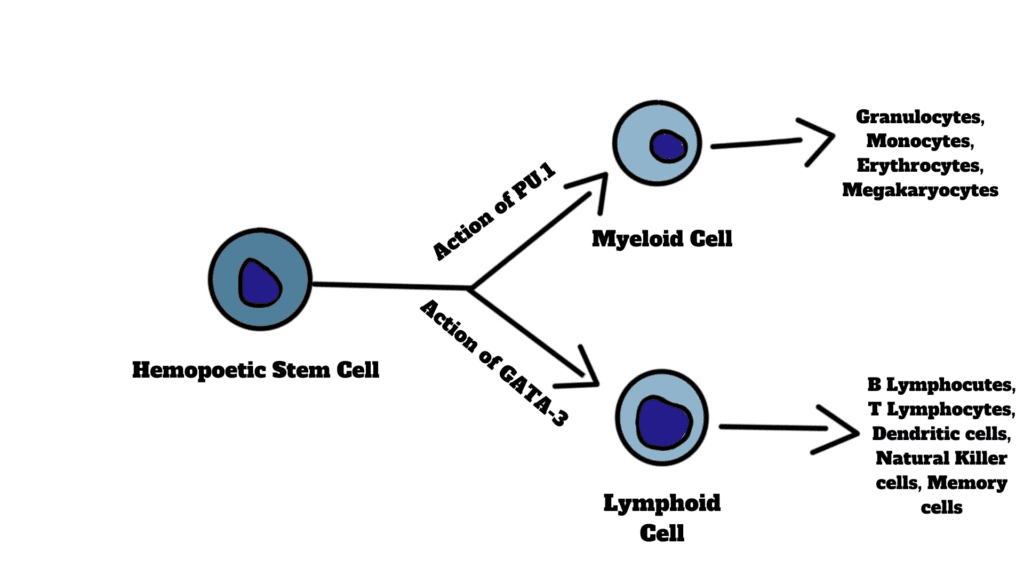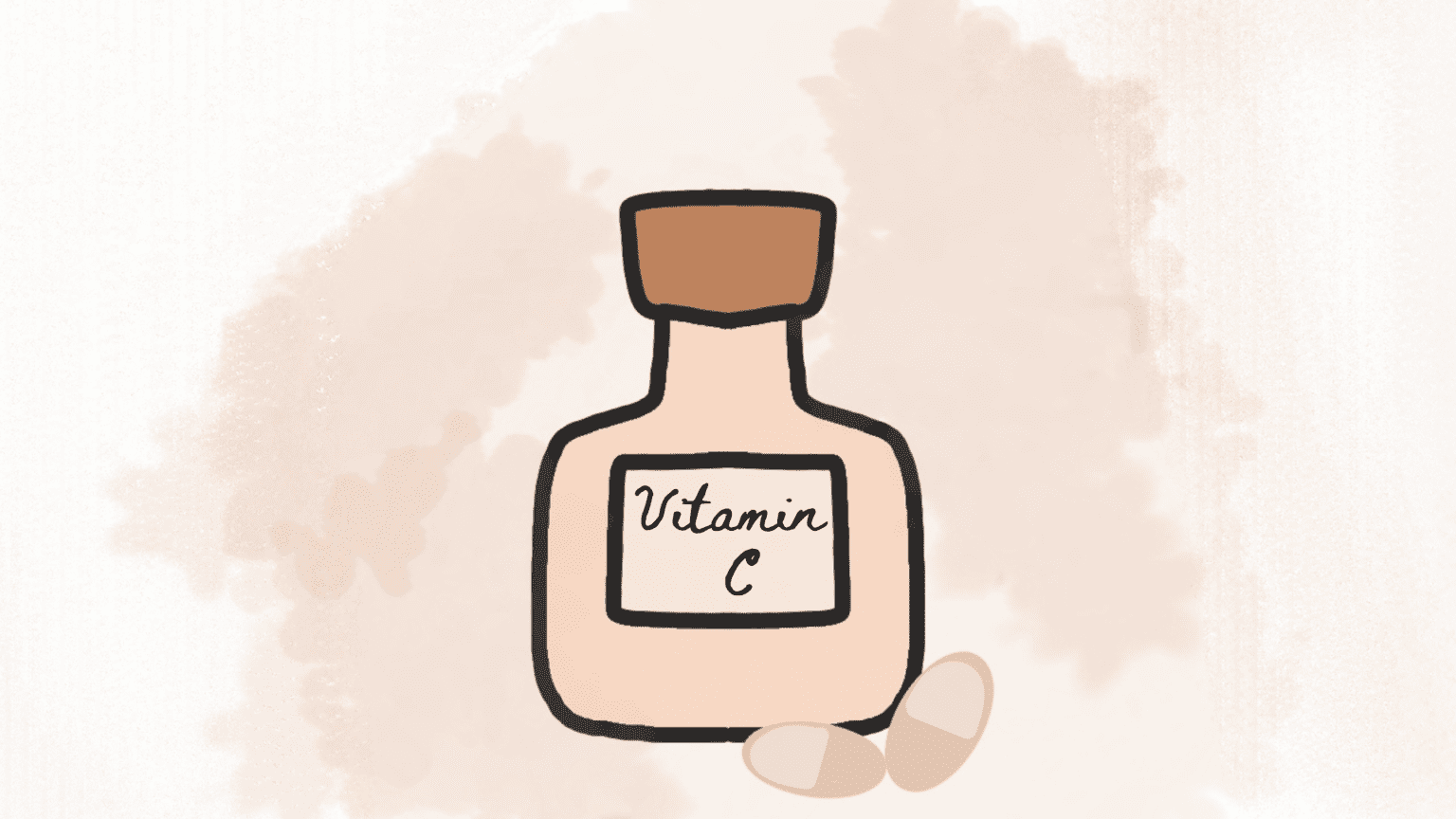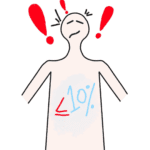Vitamin C, chemically named ascorbic acid, is an essential vitamin for the body. Unlike many other mammals, humans cannot synthesize endogenous vitamin C. It has to be consumed from dietary sources, depending upon plant-based and animal-based sources. It is a known fact that vitamin C polishes the structural beauty of skin. Its ability to formulate strong collagen is decisive in skin refinement. Collagen is a structural protein found in various tissues in our body, including skin, tendons, ligaments, bones, cartilage, etc. It makes up 25-35% of total protein content in the body.
By contributing to the vitality of collagen, it makes the skin a worthy barrier against invading pathogens. Skin is the primary or first line of defense in the immune system. Skin robustness plays a decisive role in the entry of pathogens that elicit secondary or third lines of defense.
Immunity is the third line of defense. Before the third line of defense activates, the second line of defense is capable of neutralizing the pathogenicity of invaders. The second line of defense includes the action of white blood cells, non-specific inflammation, and phagocytic activity of white blood cells. Vitamin C plays a momentous role in potentiating the second line of defense. It takes an influential participation in the production and modulation of white blood cells (leucocytes), empowering the phagocytic activity of specific immune cells or leucocytes, and neutralizing the effect of phagocytosis by acting as an antioxidant.
Let’s break down the worthiness of vitamin C in steps and learn each of them.
Differentiation of Hemopoietic Stem Cells into White Blood Cells
Hemopoietic stem cell in the bone marrow has the potential to develop into different lineages depending on the body’s needs and specific stimuli. Vitamin C facilitates the processes that give rise to immune cell lineages. It acts as a cofactor for the enzymes belonging to the ten-eleven translocation (TET) family. TET initiates the demethylation of specific genomic regions as an epigenetic modification. It modulates the gene expressions that affect the lineage of hemopoietic stem cells. PU. 1 and GATA-3 are transcription factors whose activity is enhanced by demethylation.
PU. 1 causes the hemopoietic stem cells to differentiate into myeloid cells whereas GATA-3 augments the differentiation of lymphoid cells. PU. 1 and GATA-3 make the hemopoietic stem cells committed to immune cell lineage. The supporting role of Vitamin C in this differentiation process is notable. Another way, vitamin C creates a favorable environment for immune cell lineage is by stabilizing the hypoxia-inducible transcription factor-1 alpha (HIF-1a). HIF-1a makes the hematopoietic stem cells remain undifferentiated.

HIF-1a is activated in low oxygen levels or hypoxic conditions. Its function is to modulate the processes involved in red blood cell production. For this reason, it makes the cells undifferentiated. This jackpot of undifferentiated can be made committed to specific lineages. At the same time, activation of PU. 1 and GATA-3 provides a satisfactory milieu for immune cell production.
Enhancing the Phagocytic Activity of Immune Cells
Immune cells, particularly neutrophils and macrophages are paramount in the phagocytosis of pathogens. For simplicity, pathogens are substances that have gained entry into the body, trespassing the first line of defense. Phagocytosis is the process in which specific immune cells engulf the pathogens and make them pay for what they did to our first line of defense. Vitamin C amplifies chemotaxis for proper channeling and transportation of white blood cells to the site of intrusion.
Phagocytic cells contain phagosomes. Phagosomes are the tiny bodies inside phagocytic cells. They provide the space and enzymes for the intrinsic activity of phagocytosis. Vitamin C also boosts the production and development of phagosomes, reinforcing their vitality. It has a fundamental role in the production of ROS (Reactive Oxygen Species). It is the ROS that makes the immune cells phagocytic. ROS brings about the degradation of pathogens including bacteria, viruses, or damaged cells. Healthy production and functioning of ROS require appropriate Vitamin C in the body.
Vitamin C: A Potent Antioxidant
Chemical reactions taking place in our bodies can result in the generation of free radicals. Free radicals cause cellular or tissue damage due to oxidative stress. Vitamin C, as an antioxidant, neutralizes free radicals and guards cells, including immune cells against oxidative stress. Phagocytosis integrates the production of reactive oxygen species (ROS) for destroying disturbing bodies. Sometimes, the concentration of ROS becomes high and they start harming the immune cells. Vitamin C has an electron-donating effect and in the presence of metal ions, it undergoes certain processes that result in the production of ROS.
Hydrogen peroxide is a potential reactive oxygen species and carries out the phagocytic activity. Elevated hydrogen peroxide concentrations have the potential to impact the immune cells that produce it. At this point, vitamin C introduces itself as an antioxidant rather than a phagocytic one. It neutralizes or lessens the effect of ROS on the immune cells. Vitamin C regenerates other antioxidants like vitamin E and glutathione peroxidase 4.
In a nutshell
One cannot underestimate the marvels of vitamin C. Radiant and fresh skin demands a suitable concentration of vitamin C. Skin, as the first line of defense should be sound and sturdy to prevent harmful organisms from entering through the skin. If pathogens are lucky or potent enough to cheat the first line of defense, then the phagocytic Vitamin C should be there to tackle them. White blood cells constitute a major portion of immune cells. It modifies the mechanisms involved in the synthesis and differentiation of white blood cells from hemopoietic stem cells. Neutralizing free radicals and production of reaction oxygen species are the core proficiencies of Vitamin C.




